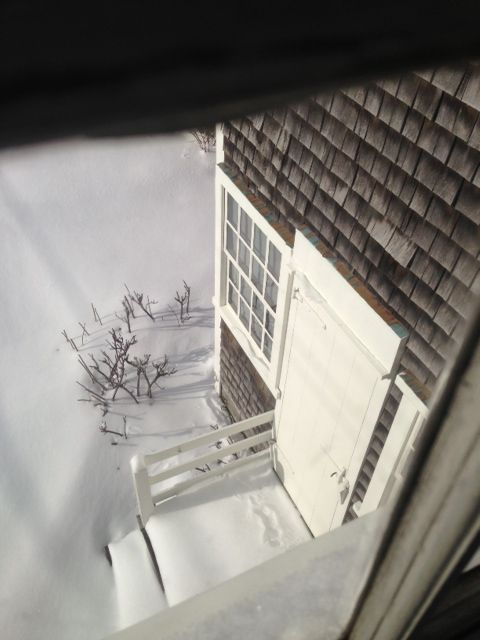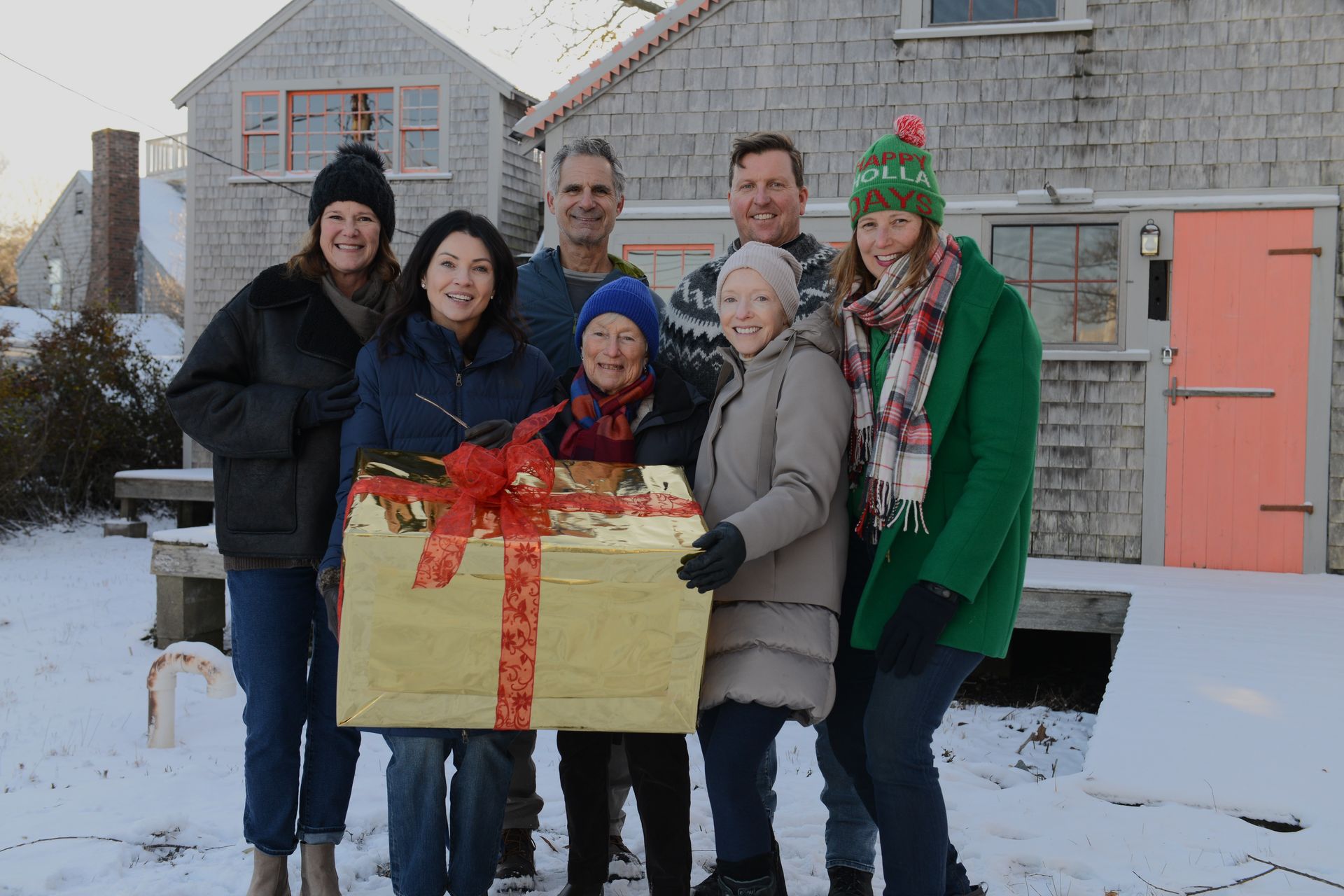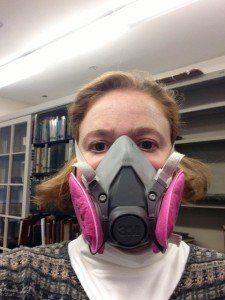Portrait of the Curator as Darth Vader
Maybe the work life of other curators can be glamorous but such is not the way of the world for a historic house museum curator among others. This is me as I appeared on January 22, 2013. What’s that you say? Where are the pearls? The glamorous outfits? The media wanting to know about the recent finds? A camera following me through exhibit halls looking at the latest exhibition of work by some great master? Alas, no. My fine clothes collect dust and moths in my closet.
I wear many hats and glamour girl is not one of them. As many of us in the historic house museum world (and in other venues within the museum world) will attest, we do many things and wear many, many hats. Thus, this is what I am typically wearing – my delightfully snazzy and very flattering 3M Niosh respirator with hot pink filters (the hot pink makes it hard to color coordinate my outfits). You have been spared my white cotton gloves, white Tyvek suit, and safety glasses (though I cannot SEE ANYTHING with them on!)
Why do I dress like this? It is required. I am protecting myself from dirt, dust, and any possible mold that might be on the Special Collection books that I am cleaning. Not much mold thankfully, but unfortunately still lots of dust that has escaped the “wrath” of dusting. But this is something you don’t want to breathe in too much of and if I did not wear this respirator in particular I would find myself with some nice respiratory problem. It’s not like dusting or vacuuming in your home – it’s incredibly concentrated and literally in your face.
I brush the cover, spine, and the text block of the book first with a brush. Then I wipe those same areas with a vulcanized rubber sponge. At all times I am working away from the spine so that I am not depositing dust or other particles into the spine. Then, I vacuum those same areas with a HEPA vacuum that keeps all of those particles inside. I do this for each and every book. Sometimes, I need to tie the book up because the cover or spine is in rough shape. Othertimes, I have to build a small box enclosure with special acid free board or cardboard or encapsulate it in a Tyvek envelope because of the condition of the book or cover. Once I have a box full, I move the books to our new climate-controlled storage area and place the books on special enameled shelves made just for the storage of Special Collection books. No off gassing here – books must be protected as best as we can from all sorts of elements. And then, I return to the Wing and clean more. I do spare my colleagues my mask when I move the books over to the other building – but I do give them a fright when they come in to see me and I am in my mask. Today, I am going for the preppy look – green sweater to go with my hot pink filters!
I say (some of) this in jest. What I am doing is crucial to the preservation of these books. And, being able to handle and look at each book helps me to better understand the extent of our amazing collection and also its condition. And in some cases, as you have seen in the past on this blog, I share some of the amazing finds with you.
JNLF
Recent Posts





